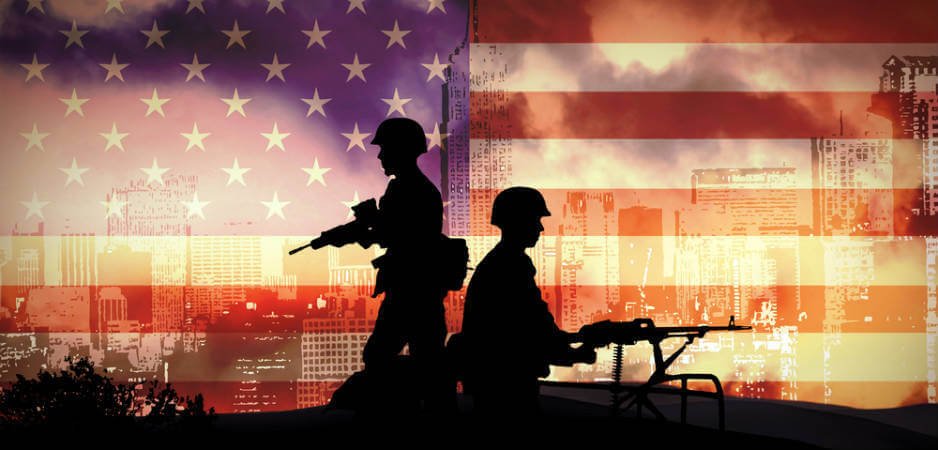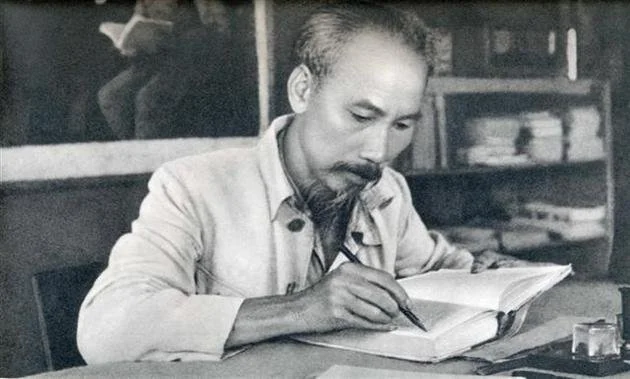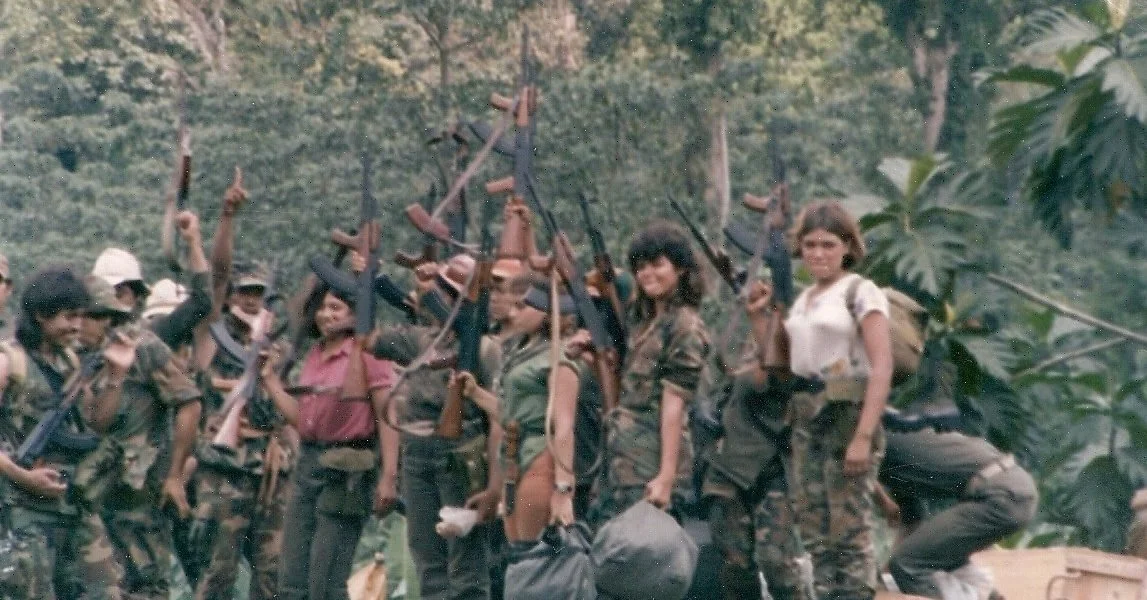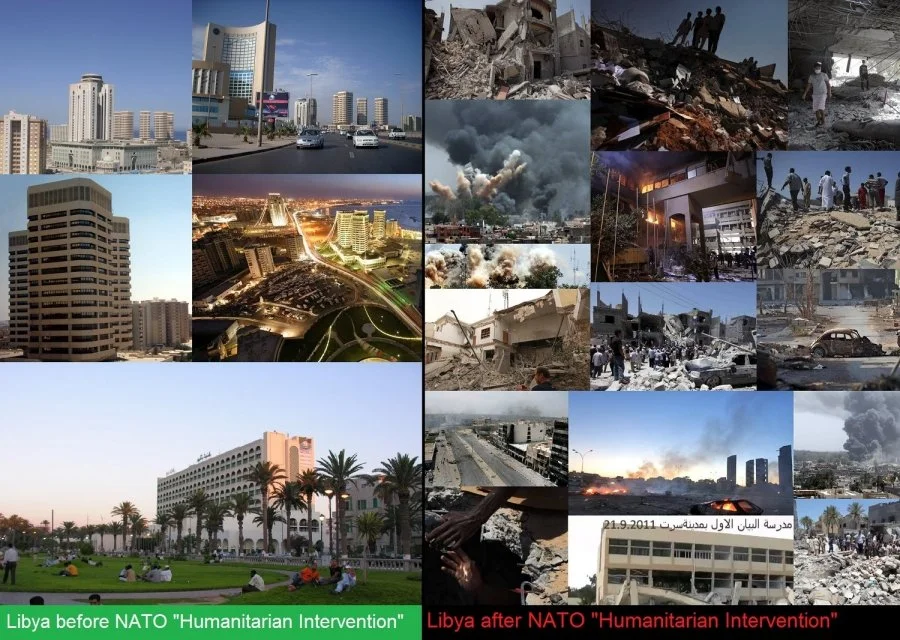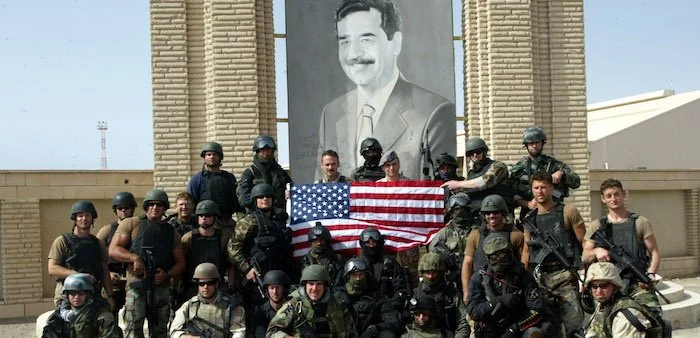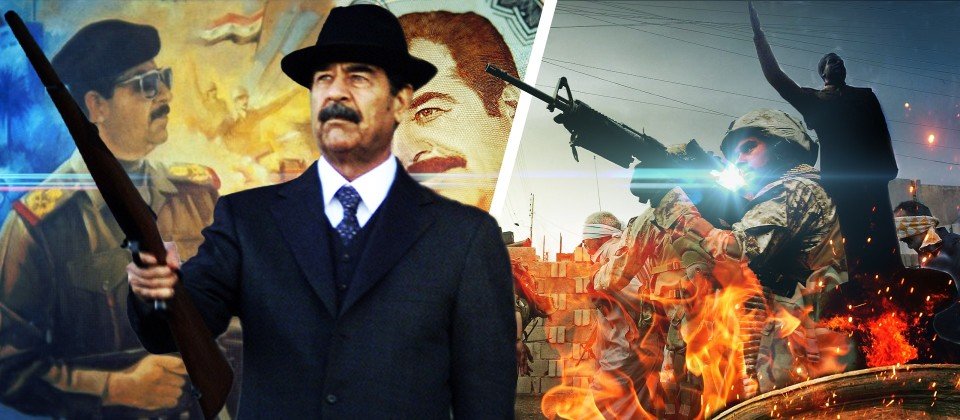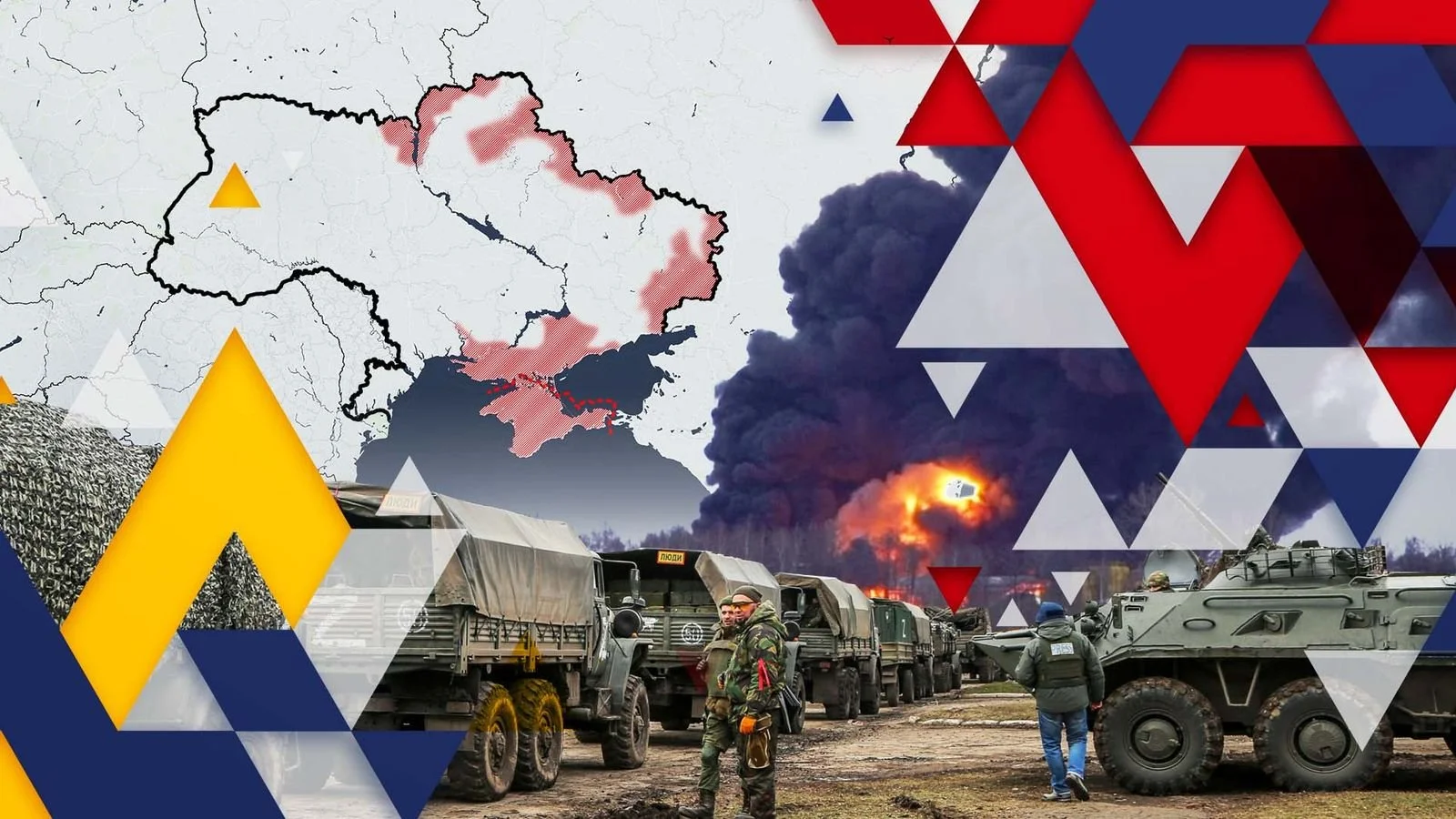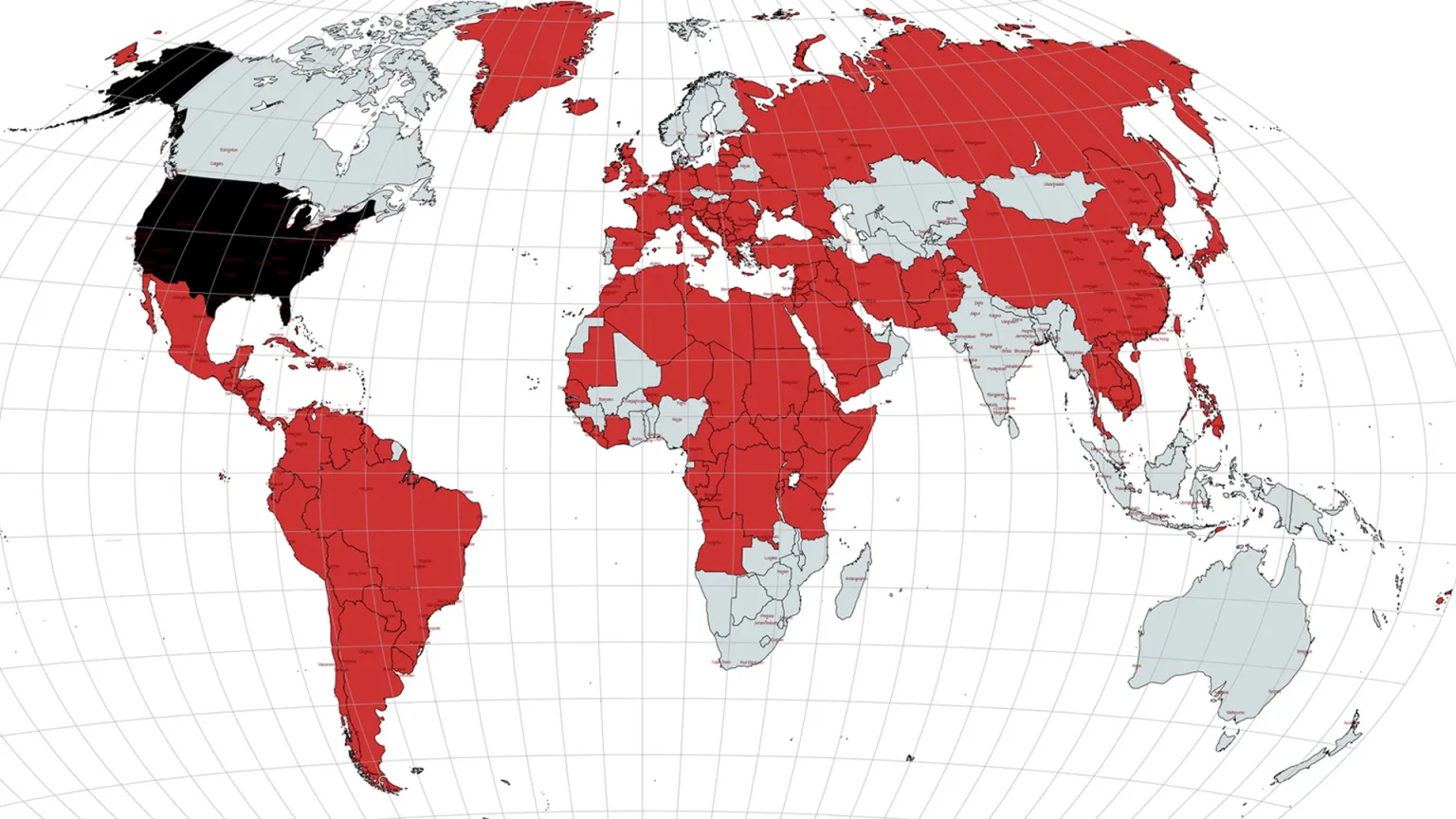America’s Victims: How Intervention led to Breaches in our National Security
The mainstream narrative that we are sold by the media about migration into the United States is simple: the poor come to this country to escape the plights of their home countries and follow the American dream to become rich and prosperous. While this idea sounds star-spangled awesome, there is a dark side to why people have moved to the US in the past century. While there are clear and present dangers to people in lower-income countries, such as natural disasters, the main culprit is social immobility. In the United States, there is a vague belief that anyone can be anything: The American Dream. However, it always seems to be that the nations assaulted by the United States tend to be the ones that aspire to achieve the American Dream. While America has militarily intervened 469 times in other countries since its inception, it would be impossible to list every single one in one place. However, the picture that will be painted in this article will be one with the blood of the millions who have been displaced by our actions, and highlight how we are war criminals whether we like to think so or not.
The Quintessential Failure: Vietnam
Marines of the III Marine Amphibious Force (MAF) in 1968. III MAF was to be a key component in an invasion that would have altered the trajectory of the Vietnam War. NATIONAL ARCHIVES
World War Two was the largest population displacing event the world had ever seen, with over 175 million people forced to migrate out of former Axis nations, the Soviet Union and China. Much of the movement of people was intercontinental, such as the Soviet authorities removing ethnic Germans from Poland and Czechoslovakia, and Chinese refugees escaping the brutal civil war that re-commenced following the defeat of Imperial Japan. Following the war, many of the former imperial powers also crumbled under the pressure of the war, and colonialist wars further exacerbated the refugee crises. The Dutch were fighting the Indonesians in their National Revolution, the British were fighting factions in Palestine, and the French were attempting to reassert control over Indochina. The French were decimated during WW2, and the Japanese Empire occupied Indochina from the Vichy French government in 1940. The Vietnamese began to resist the occupation, equating the Japanese to their French oppressors, and formed the communist rebellion called the Viet Minh. During this time, a Vietnamese nationalist named Ho Chi Minh became the leader of this rebellion, and began resistance operations against the Japanese. This is the first stage of American intervention in the region, as American forces stationed in China under Joseph Stillwell aided the Communist insurgency, in return for information on Japanese troop movements and bases in Indochina. By the end of the war in 1945, the Viet Minh took the opportunity to establish a stronghold in Northern Vietnam, removing all French and Japanese forces from the area.
President Ho Chi Minh. Image found here.
By the time the war ended, the Viet Minh launched a new offensive against the French colonialist forces that attempted to reinstate control over their holdings in Indochina. The French sent 15,000 battle-hardened troops to reclaim their colony, only to be defeated by Viet Minh guerillas at Dien Bien Phu in 1954. At this point, the Cold War was in full swing, and the French no longer had the capacity to maintain its empire. It turned to its strongest ally, the United States, and the US pushed for a peaceful reunification of Vietnam with free elections and a total ceasefire. To everyone’s surprise, the Communist North agreed, but the South wanted to maintain its Western style of government. The North ramped up attacks on the South, and anti-Communist sentiment in the United States led to direct involvement in the conflict. The US President, Dwight D. Eisenhower was worried of the collapse of American influence in Southeast Asia following the Communist victory in China, resulting in millions of dollars of aid towards South Vietnam and Cambodia.
American involvement only increased under John F. Kennedy, with boots on the ground and the explicit support to assassinate South Vietnamese dictator Ngo Dinh Diem. In the midst of escalation, JFK was assassinated, and his Vice-President Lyndon B. Johnson exponentially increased American forces in Vietnam and Laos, initiating large-scale bombing runs and the use of Weapons of Mass Destruction (WMDs). At this point, LBJ was supporting a military junta that was repressing its own people in South Vietnam, and countering a guerilla force that the US military could not defeat. Too much money was spent to back down, and there was no victory in sight. The war became increasingly unpopular at home due to the initiation of the draft in 1964. Images of war crimes committed by American forces, such as the My Lai massacre and the use of napalm further ruined America’s “crusade against communism”. The war effort, and leaks of war crimes ultimately cost LBJ re-election, and Richard Nixon realized that the war could not be won. He famously began a policy of Vietnamization, meaning that the South Vietnamese would inherit the bulk of the war effort in order for the withdrawal of American forces. Essentially, the South Vietnamese forces would take control over the frontlines and utilize American equipment, just without American soldiers. In theory, this practice should have been successful, had the Americans kept their word.
The North Vietnamese government made a deal with the Americans to withdraw all forces in exchange for recognition of the South and once again, elections. While Nixon took the win, the North bided their time to build up their forces for a final offensive. To add insult to injury, the American economy crashed during the 1973 Oil Crisis, and the US Legislature passed the War Powers Act to limit executive military action. Congress also delivered only half of the $1.45 billion requested by the new American president Gerald Ford. Even when the North attacked, violating the treaty, the Americans did nothing. With their army replenished with Soviet armor and material, the North attacked in 1975, and captured the capital city of Saigon. The American military failed to protect South Vietnam. Over one million refugees fled the region on boats toward the West Coast, and another 1.5 million were moved to regional allies, like Thailand and the Philippines. They left because the Americas could not guarantee their safety from the communist forces, a promise they once offered when over 500,000 American troops fought for their “freedom”. As the last South Vietnamese President Nguyen Van Thieu stated before his capitulation:
“At the time of the [Paris] peace agreement, the United States agreed to replace equipment on a one-by-one basis. But the United States did not keep its word. Is an American’s word reliable these days? The United States did not keep its promise to help us fight for freedom, and it was in the same fight that the United States lost 50,000 of its young men … The United States has not respected its promises. It is inhumane. It is untrustworthy. It is irresponsible … You ran away and left us to do the job that you could not do.”
A woman tries to carry a child to safety as U.S. Marines storm the village of My Son, near Da Nang, searching for National Liberation Front (“Vietcong”) insurgents in April 1965. Photo: AP
The United States, over the course of four presidential administrations, only sought to promote national interests in lieu of the millions that suffered as a result of our actions. In the occupied South, 500,000 to a million people were forced into re-education camps, where they suffered under the brutality of the new regime. In Cambodia, the war and its impacts also led to one of the worst genocides in history, where 1.7 million people lost their lives, composing over 21% of the country at the time. The destabilizing effects of American intervention in the Indochina region decimated millions of lives, and forced people to come to the nation that had bombed them with chemical weapons only a few years prior. Yet, not a single President was arrested, no generals charged, and no system for those that came with nothing. Instead, they were disgraced with racist remarks, segregated from American society and forced to live in the worst areas of American cities just to survive. They escaped one hell only to find themselves in another one. This hell slowly froze over, and life expectancies did rise. But, they would not need to be here had it not been for Cold War rivalries and geopolitical squabbles. Their lives were worthless in the eyes of the Americans, collateral damage to their endgame.
Control over Latin American Politics
Nicaraguan contras in 1987. Photo: Tiomono/Wikimedia Commons CC BY-SA 3.0
The United States is amid one of the worst migration crises in its history, as millions of people from Central America are moving towards our Southern border looking to come into the United States. To make matters worse, there are over 1.9 million undocumented immigrants in the country, further exacerbating the crisis within the United States. Many would say the autocratic regimes in the region are riddled with crime, and that they are desperate to come to the United States to escape. This is only half the truth. The underlying cause of the Central American migration crisis is American interventionist, militarist, and neoliberal policies that exacerbate economic inequalities within these nations. Starting in the early 20th century, the United States established “banana republics”, in which the Central American nations of El Salvador, Honduras, Guatemala, Nicaragua, Panama and Costa Rica were economic puppets to the US. The US government installed pro-American politicians that benefited American interests, and any attempts to diverge from American interests led to removal and replacement of the politician in lieu of a more favorable one. This interventionist policy continued during the Cold War, when the CIA overthrew left-wing governments in Latin America in exchange for conservative, autocratic regimes that aligned with American interests. However, after the end of the Cold War following the collapse of the Soviet Union, the effects of “U.S. policies of military intervention and [the ensuing enforcement of] economic neoliberalism have undermined democracy and stability in the region. [As a result, this has created] vacuums of power in which drug cartels and paramilitary alliances have risen.” . Even in the present day, the Biden administration continues to condone “state-sponsored violence, the persecution of human rights activists, historical land inequality” and its continued interventions in the region. The Biden regime is also complicit in its support of coups in Bolivia, Honduras and Venezuela, as well as the financing of the Honduran military, even after it killed a renowned human rights defender. While there are supplemental reasons for migration, such as natural disasters that impact the region due to its underlying poverty, the primary cause of the poverty and poor governance is American intervention.
Meddling in the Middle East
The first thing that comes to mind when you think of American intervention, the Middle East is probably the first on the list. The primary interests for America in the region lie in its natural resources, but mainly oil. Oil is king, and the black gold that seeps from the desert fuels American consumerism. But beyond that, America sees the Middle East as its sphere of influence, and as nations begin to sway towards America’s enemies, the results are catastrophic. Every nation the United States has involved itself in is worse off than before, and the cascade impacts America’s own interests in migration and terrorism. We are the causes of our own problems, and while we stuck our nose in every Middle Eastern nation, the damage we caused is immeasurable.
Libya
On left, images of Libyan society under Qadafi, and on the right is what happened after the American intervention. Image found here.
The former Italian colony, the Barbary Coast, the land of the Great Desert. Libya was a relatively stable territory in the early 1950s, under the Western-backed King Idris I. However, his people were extremely unsatisfied with his kiss-assery towards the UK and France, and the younger generation of military officers overthrew him in a bloodless coup in 1969. Led by one Colonel Muammar Qadafi, a charismatic leader brought Libya into the future. He unified the various tribes of Libya, set up social welfare programs such as free healthcare and education, and initiated vast construction projects. He was able to do such actions with vast oil profits, and became the first Arab state outside the Gulf to make such profits. He also used his wealth to fund different nationalistic elements abroad, such as the PLO in Palestine, and various African independence movements. His political stance was between communism and capitalism, at least when it was convenient to do so. By the late 1980s, Gaddafi expanded his support for the PLO, as an anti-Western movement, and assisted the Palestinians in killing three American soldiers in Berlin and blowing up a Boeing 747 in Lockerbie. To add a cherry on top, Qadafi attempted to build nuclear weapons, and it became apparent that Qadafi was a rogue agent. President Reagan, the American strongman cowboy, wanted to flex his muscles to counter Soviet influence in the Middle East, and to show that America was a force to be reckoned with. He launched a massive aerial assault of Libya and blockaded its harbors to prevent the acquisition of nuclear weapons. Qadafi had to back down, and his regime only got more repressive and more flashy. He became increasingly repressive, but held the nation together, but the once grand benefits were shells of their former selves. In 2011, with the Arab Spring in full swing, a revolution began to brew in his major cities. President Obama and his allies felt it was necessary to protect Libyan civilians and create a new democracy in the region, and the time to do so was upon them. He provided military aid to the revolutionaries, and they stormed the capital and assassinated Qaddafi. But, as aforementioned, all the tribes Qaddafi held by force fell apart. Entire factions fought the American propped national government, and 217,000 people became internally displaced as a result. Over 1.3 million currently require humanitarian assistance, and much of the country is in ruins. However, the lucrative oil industry is run with the assistance of European and American partners, and attempts of nationalization are quickly rebuffed by refusals to send economic/military aid. Now, the country is a lawless wasteland that has become a hub for illegal immigration into Europe, and a key training center for terrorist groups like Al-Qaeda and ISIS. The country is still in a de-facto state of war, and continuous terror attacks, rampant corruption and inequality are what average Libyans face everyday. And ironically enough, Obama considers Libya his “worst mistake”, as if that could bring back the decade of anguish by its people, who still suffer to this day.
Iraq
U.S. Navy Seals and Polish special forces, Umm-Qasr, Iraq, March 23, 2003. Desmond Boylan/Reuters. The image is intended ironically, as the United States overthrew Saddam Hussein without an ounce of forethought.
The Cradle of Life, the Fertile Crescent, decimated by the bombs of the imperialist Yankees. Iraq is currently a shell of its former self, and over 9.2 million people are either internally displaced or refugees. That's over 20% of the entire country of Iraq without a home in their native land. Iraq is no stranger to foreign intervention, it is actually an arbitrary creation made by the British Empire during the First World War. After the war, and the division of the Middle East thanks to Sykes-Picot, Iraq became an imperial British mandate under an Arab king, King Faisal I. The monarchy was initially popular in the country, but nationalist sentiments quickly dominated the political sphere, and the last king of Iraq, Faisal II, was brutally executed by the Iraqi army in the bloody 14 July coup in 1958, establishing a new nationalist republic. The leader of this new republic, Abd al-Karim Qasim, adopted a similar platform to Egyptian Colonel Gamal Abdel Nasser, and advocated for Arab nationalism and to free the Middle East from the yoke of the colonialist powers. However, he could barely hold onto power, and his power base was divided between Arab nationalists and communists. The Arab nationalists, under the Ba’athist banner, overthrew Qasim in another bloody coup during Ramadan in 1963. The Ba’athist party also suffered several internal power struggles, until Saddam Hussein took the reins in 1979. Saddam was a brutal dictator, but his contributions to Iraqi society were immense. He provided compulsory education up to the college level, promoted women's rights, ensured quasi-equality between the various ethnicities in Iraq, and built up Iraq’s infrastructure. While there are debates that these improvements were negated by years of war with Iran and the United States, Iraq was better off under Saddam than it was under the boot of American occupation. While Saddam was no angel, and his Death Note extends hundreds of pages, he kept everything together. My father told me a parable about Saddam, and it applies to the idiocracy of American foreign policy in wanting to remove him.
A night worker comes home after his shift at 5AM, only to hear the distinct “Cocka-doodle-doo!” The roosters crowing became increasingly frustrating for the worker, as he wanted to get some well-needed shut-eye. The man walked up the the rooster’s owner, who lives on the same block, and asked if he could resolve the rooster problem. The rooster’s owner obliged, slaughtered the rooster, cooked it, and ate it with the night shift man right then and there. The man, satisfied, went to bed the next morning, only to hear the crows of dozens of roosters. In his nightgown, he knocked on the former-rooster owner’s door, and asked him what happened! The man said, “The rooster we killed controlled all the other ones, and now nothing can shut them up.”
The United States, under the H.W Bush administration, saw a problem with Saddam and wanted to get rid of him, without thinking of the consequences. In the ‘91 Gulf War, there was ample justification to push Iraq out of Kuwait, even if the Americans told Saddam they would not interfere in Arab relations. The United Nations gave the American coalition the green light to liberate Kuwait, and commenced the aerial bombardment of Iraq, and the ground invasion of the country. Saddam engaged in the conflict to distract his populace from the failure of his previous engagement in Iran, and this war was no better. Iraqi infrastructure was destroyed, the military in disarray and no friends left in the international community. H.W. Bush, in hindsight, made the smartest decision of any American president by not pushing towards Baghdad in 1991. He knew, (well, at least his advisors told him) that if Saddam fell, the country would collapse and destabilize the region(remember this for later). Bush took the advice and only set out to complete what the United Nations had authorized the coalition to do. Saddam, sorely beaten, had to relinquish his military research programs, ban the development of Weapons of Mass Destruction, and establish a Kurdish autonomous zone in the North. In theory, this is where the story should have ended. But two men changed the fate of Iraq, and millions would die or leave because of it. Enter Dick Cheney and Paul Wolfowitz.
From left to right: President George W. Bush declaring mission accomplished after the 2003 invasion, a secret CIA document expressing the wish to remove Saddam Hussein, President Bill Clinton holding a briefing about the situation in Iraq post-Gulf War, President H.W. Bush holding a briefing about the Gulf War, President Obama also holding a press briefing on post-2003 Iraq, Iraqi dictator Saddam Hussein, President Ronald Reagan, Collin Powell at the United Nations holding the “yellow vial”, claiming it was from a alleged non-existent Iraqi WMD program, fingerprints of Saddam Hussein after his capture, and finally a statue of Saddam Hussein being hoisted down after the 2003 invasion of Baghdad. Image found here.
The two Republican strongmen in the Bush Jr. administration groomed the President, and coerced him into believing he had a personal vendetta against Saddam. While ironically satisfied with the decision to topple Saddam in ‘91, they absolutely despised how Saddam was able to rebuild his regime under the Clinton administration. Both men attempted to garner support for “the removal of Saddam's regime from power', insisting that the US 'should establish and maintain a strong US military presence in the region, and be prepared to use that force to protect our vital interests in the [Persian] Gulf - and, if necessary, to help remove Saddam from power.” These men, and many of the hawkish Republicans of the time, felt that the United States should be unrivaled in its global hegemony, and that Iraq stood in America’s way. This ideology bled into the foreign policy of Bush Jr., and when the American homeland was attacked on 9/11, Cheney and Wolfowitz knew they found the opportunity they were looking for. The War on Terror began as soon as the towers fell, and the invasion of Afghanistan, more or less, had the popular support of the global community. Even Russia and China aided the United States in countering the Taliban, and while this policy has shifted in the past 20 years, everyone wanted to get revenge for what the Taliban did to the United States. But, the kicker comes with how to justify an invasion of Iraq. Saddam had not invaded a country in over a decade, their WMD program nonexistent, and there was no connection between Saddam and the attacks on the World Trade Center. But one yellow vial and a patchwork of lies later, the American military attacks Iraq once again. The US Air Force bombed civilian and military targets, decimating the Iraqi power grid and infrastructure with over 20,000 individual sortie missions in a Shock and Awe Campaign. After the largest bombing campaign since Vietnam, American armed forces entered all major cities, and conquered Baghdad by April 3rd, 2003. As Saddam’s regime collapsed under the pressure of the American armed forces, the entire structure of Iraqi society fell alongside the regime. Police, the military, the entire government, simply abandoned their post. The American occupiers disbanded all security forces, and barred any and all former government officials from rebuilding the country. Why does this apply to the migration crisis? All these soldiers and ex-pats were forced to seek new avenues of employment, and they found it with terrorism. Unbeknownst to President Bush, Saddam Hussein prevented the rise of terrorsim in Iraq through his repressive policies, and regardless of how many human rights were violated, it did the job. Once Saddam was out of the picture, every faction within Iraq wanted a piece of the pie, and rebellions arose throughout the occupation zone. The Americans, as with Vietnam, are not trained to fight a guerilla war, and in several battles, like in Fallujah, the guerillas took control of parts of the country. As Bush’s tenure ended, and the Iraqi nation was returned to its “people”, the instability caused by the United States took its toll, and the Islamic State took control of much of Northern Iraq and neighboring Syria. The instability caused by American policy in Iraq led to the persecution of Iraq’s minorities, and a direct violation of American national security. Terror attacks in the UK, France, Afghanistan, Iraq and within the United States itself highlight the blatant hypocrisy of its invasion. In sum, we invaded Iraq to protect our national security and promote freedom and democracy in Iraq, only to do the complete opposite.
Image of Saddam Hussein and American forces in Baghdad during the 2003 invasion. Image source found here.
While there are probably another dozen paragraphs I could write about Sudan, Syria, Iran, Afghanistan, Lebanon, Egypt, Eritrea, Somalia and Yemen, this article would simply be too long. I have addressed some of these nations and our failures in policy in previous articles, which are linked here, here and here. While this comes off as showboating, each of these articles adds context to this one, and explains American policy in specific instances versus the general sense I am discussing herein. But, long story short, our interventions in each of these nations has led to millions emigrating to Europe and North America, and the decrease of quality of life standards for millions more. We have also jeopardized our national security due to the minimal forethought to these invasions, and we will pay the price for generations to come.
The War in Ukraine
Image of a map of the War in Ukraine, and the damage that occurred therein. Image found here.
The Russo-Ukrainian War is the largest land conflict that has struck Europe since the Yugoslav Wars of the 1990s, and from the onset of World War Two. There are arguments that the United States, and the European Union, are directly to blame for the conflict, and to an extent they are. Before the Soviet Union fell, the United States, under Bush Sr., promised Soviet Secretary Mikhail Gorbachev that the newly independent Eastern bloc would not be integrated into NATO, or the North Atlantic Treaty Organization. The Western leaders negotiating with the Soviets convinced them that they move “not one inch eastward”, at least in the words of US Secretary of State James Baker. The subsequent expansion of NATO into the 2000s became a travesty to the Russian government and its people, and one man fed on this anger. Vladimir Putin saw the failures of Soviet leadership and the first Russian president, and wanted to change the image of the Russian Federation. In discussions in the late 2000s about the possibility of adding Georgia and Ukraine into the alliance, he invaded the Georgian regions of Abkhazia and South Ossetia in 2008. Then, in 2014, he annexed Crimea from Ukraine. All the West did was sanction Russia, but that had ample effect on his ambitions. Rather, Western posturing and expansion eastward towards Russian borders forced Putin’s hand, and led to the invasion of Ukraine in 2022. Now the mainstream argument is that Putin himself orchestrated the invasion and he alone is to blame. But, the United States and its NATO allies forced his hand. The scenario is similar to American intervention in Cuba and Latin America following Soviet encroachment in the region, as the United States enforces its “Monroe Doctrine”. The Russians are doing the same thing, protecting their interests to prevent American forces right on the border with Russia, within striking distance of Moscow and other strategic areas. While the US is not solely to blame, American intervention has lengented this conflict, turning it into a proxy war between Russia and NATO. Apparently, it is critical to American national security to maintain Ukrainian independence, and it has already taken $75 billion in aid as of May 19th, 2023. But why? Will it affect the American consumer if Russia occupies Kyiv? Or Bakhmut? Or Odessa? According to Joe Biden, it is the prevention of the fall of Ukraine to Russia that is absolutely critical for American interests. Pundits have said this prevention is a message to China to deter an invasion of Taiwan, but even then, China may still choose to do so independent of the outcome of the war in Ukraine. Irrelevant of why the West chose to do it, the impacts are more than apparent. Thanks to America’s NATO bluff, 8.2 million Ukrainians have fled the country, $135 billion in damages, and 354,000 dead. Are these costs worth it to American national security? Or will we see the impacts 20 years on, as we did with Iraq and Afghanistan. Even in Vietnam, American support of the South exacerbated the conflict and lengthened it by at least a decade.
So where are we now?
A map of countries where the United States has militarily intervened / credit: Congressional Research Service
The United States of America has orchestrated nothing short of war crimes when intervening in dozens of nations. We have displaced millions, killed hundreds of thousands, and financed wars that are still being waged to this day in Syria, Sudan, Ukraine, Yemen, and countless others. We have not atoned for our actions, and we have done so to protect our national security. But this vague concept to protect Americans woefully backfired. We have been under threat of terrorism at a higher level than before 2003, and we are at a higher risk of nuclear war than ever before in our history. And yet, any President you will ask will say that their actions were democratic, and promoting the general welfare of the United States and the world. I would also like to list the American presidents that should be considered war criminals, and so they can be designated as such to the international community, and to the millions of lives these men have uprooted or ended based on their singular actions as Commander-in-Chief. But most importantly, we as American citizens need to take a heavier hand in understanding our national security/foreign policy, so we can promote peace and security without destroying it in the process.
Harry Truman
Dwight Eisenhower
John F. Kennedy
Lyndon B. Johnson
Richard Nixon
Gerald Ford
Ronald Reagan
George H.W. Bush
Bill Clinton
George W. Bush
Barack Obama
Donald Trump
Joe Biden

